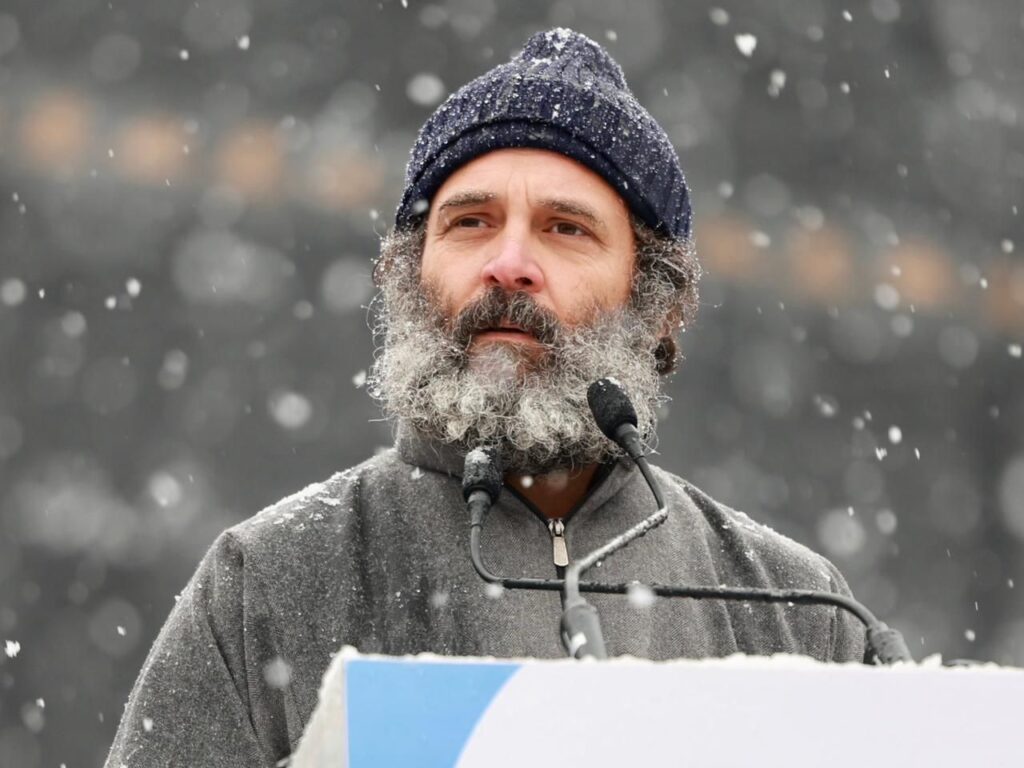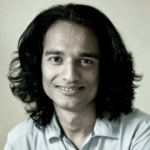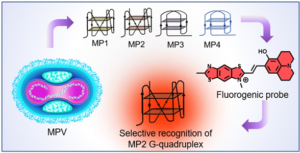
Rahul Gandhi in Srinagar at the conclusion of his yatra
 By Kaushal Kishore
By Kaushal Kishore
Rahul Gandhi started Bharat Jodo Yatra for extensive public contact. The campaign started at the memorial ground of former Prime Minister Rajiv Gandhi, a victim of politics of hatred and terrorism, and ended at Lal Chowk in Srinagar. The 117 ‘Bharat Yatris’ covered 14 states while walking for 116 days.
Rahul described the yatra as a medium for the propagation of his ideology with a new slogan, to open a counter of love in the market of hatred (nafrat ke bazaar mein pyaar mohabbat ki dukaan). It was repeated so often. At the same time, the hatred that was the principal reason behind the idea of Bharat Jodo (Knit India) was nowhere in the country, as he observed.
The yatra has divided the life of Rahul Gandhi into two different phases — before and after the foot march. In addition to Rashtriya Swayamsevak Sangh (RSS) and the Bharatiya Janata Party (BJP), the media was also his target constantly.
The people associated with the BJP and RSS maintained tolerance and peace. Many among them wished him success and good luck for the yatra. Repeated violations of security norms created scores of problems for the government. The idea of Bharat Jodo turned out to be a part of an initiative of the government of India during the presidency of the G-20 that Prime Minister Narendra Modi has been leading these days.
The feeling of mutual love and harmony among countrymen is certainly commendable. Recently, PM Modi has made a clear appeal for social harmony on two different occasions. In the last meeting of the National Executive of BJP, the emphasis was laid on it. He had addressed the rally of the NCC (National Cadet Corps) and appealed for unity and asserted, “Several issues are raked up to create division among the children of Mother India” (Bhaanti, bhaanti ki baatein nikaal kar, Maa Bharti ki santano ke beech main doodh mein darar karne ki koshishe ho rahi hain). It seems, there is a similarity between the common people of India and the two leaders on the question of harmony. For the national interest, political workers and religious leaders can be helpful to improve the situation while keeping these facts in mind.
Mahatma Gandhi started the politics of foot march and Satyagraha in 1930 with Salt Satyagraha (Salt March) and Dandi March. This inspired former Prime Minister Chandra Shekhar in 1983 to initiate the long march from Kanyakumari to New Delhi. Congress leader Digvijaya Singh is known to circumambulate the Narmada River on foot. The Kamal Nath government in Madhya Pradesh could not run for its full term, but Kamal Nath’s foot march definitely helped Congress win the assembly seats in that track. YS Jagan Mohan Reddy did the 3,600-kilometre march on foot from his native village in Andhra Pradesh that lasted 11 months. That ensured his victory in the assembly elections. In Andhra Pradesh, the Bharat Jodo Yatra came across certain difficulties.
After the completion of the Bharat Jodo Yatra from Kanyakumari to Kashmir, Rahul Gandhi is now back. Though it was hoped that 150 new faces were going to emerge during the long march, nothing of the sort has happened. The image of Rahul Gandhi is definitely shining and is being seen in a new light.
On the political map of India, it has virtually drawn a vertical line of 4,000 km. Rahul Gandhi seems to have left the old image of ‘Pappu’ behind him and emerged on the national scene like a philosopher with a long beard. During this march, his team tried hard to build an all-new image for him. Although he himself rejected its relation with any electoral prospect, such acts of one of the top leaders of a grand old political party and its members need a kind of interpretation.
The foot march is expected to have infused energy into the party workers at a crucial juncture. Its impact on electoral prospects is a deal of the future. But it has brought serious issues like inflation, unemployment and communal disharmony to public discourse. People from different corners and all walks of life tried to keep pace with the marching team. Senior leaders like Jairam Ramesh and Digvijaya Singh played a significant role in it.
The success of the yatra would further strengthen the hold of the Nehru-Gandhi family, and also confirm the position of Rahul Gandhi as the next prime ministerial candidate after the Congress Party elected its new president to obtain the certificate of becoming democratic. This is perhaps the reason that leaders of the regional parties aspiring to be the next prime minister kept a distance from the yatra. More than 400 dialogue sessions took place that included huge public gatherings, small street meetings, press conferences and interactions at the rest houses. Leaders and groups engaged in protests against the ruling dispensation were ready to support him. The holidays on two occasions — Diwali and Christmas — resulted in political rejuvenation.
Rahul Gandhi coined a new mantra of Daro Mat (don’t be afraid) for the masses. Teen Bandar, a brand management company run by Prashant Chari and Savio Joseph, branded a new leader out of Rahul Gandhi. According to the organisers, the yatra cost a billion bucks. But its ‘political economy’ will be many times more. He often mentioned the term family. It reminds us of Mario Puzo’s novels i.e. The Godfather and The Family. A series of popular Hollywood films were produced on his works. The family rooted in Sicily (Italy) used to help how to remove the fear or to create it. So far as the idea of the family and political economy of the march are concerned, Puzo can be referred to.
The journey from south to north is called a pilgrimage in Indian tradition. Lord Hanuman along with Sanjivani Booti (panacea) is its symbol. Priyanka Gandhi Vadra also mentioned the spiritual side of this pilgrimage at Lal Chowk in Srinagar. Baba Amte did the 5,000-km-long trek from Kanyakumari to Kashmir in the eighties. After moving from south to north, he travelled from west to east, and this march was also referred to as Bharat Jodo Padyatra. Rahul Gandhi refers to power as poison. There is a great resemblance in the two-foot marches indicating two things. It’s possible that Rahul Gandhi may also embark on its second part from west to east in the future. The intention of separating it from the electoral prospects indicates moving on a spiritual quest, more like Baba Amte, in case of failure to attain power. It can also ensure the respectful departure of the Nehru-Gandhi family from politics. The new image of a philosopher or a saint or a Maulana is in its favour.






Excellent, incisive, factual information and totally non controversial article.
Someone, with first hand knowledge, should cover factual information about how time was spent by the yatris at pit stops and non walk times…selected candid pictures would be an added value add.
Rahul Gandhi’s Bharat Jodo Yatra has left a significant impact, redefining his image and strengthening his position. 🚶♂️ His journey from Kanyakumari to Kashmir has energized party workers and brought key issues to the forefront. 💼 With talks of him being a potential prime ministerial candidate, the yatra’s success may shape the future of Indian politics. 🌟 #NewEra #PoliticalJourney